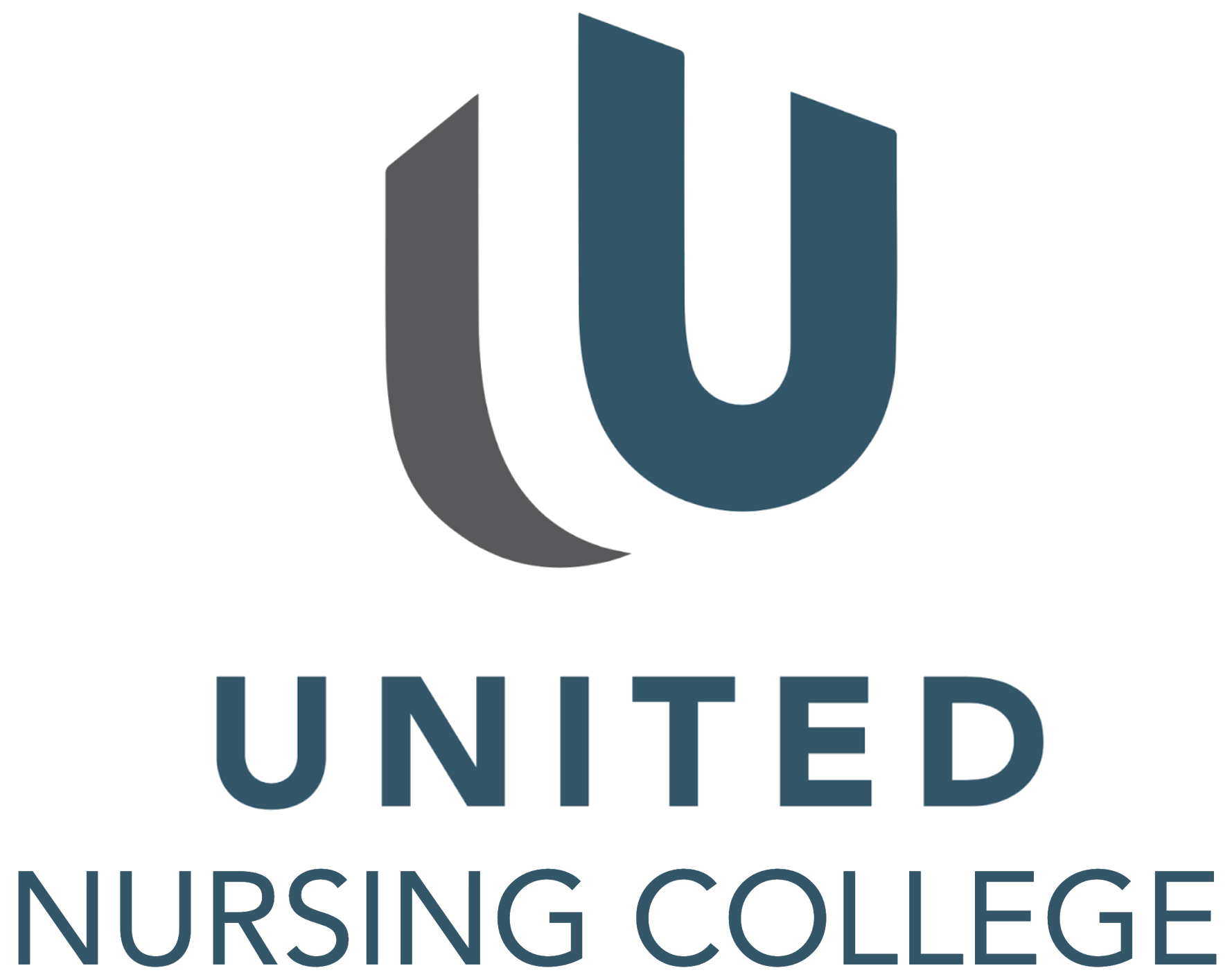Deans & Directors Blog
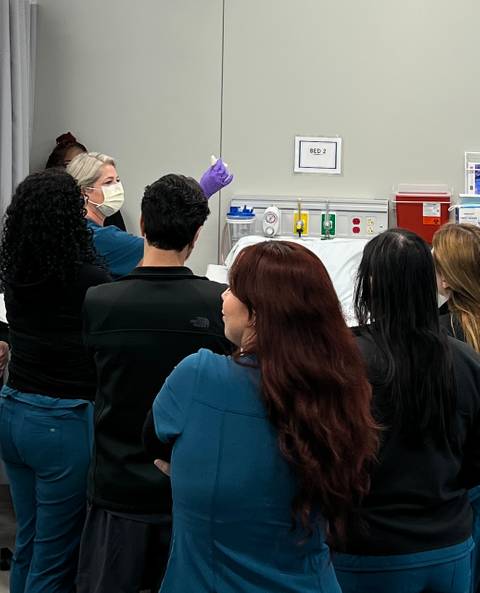
DEI for UNC: Everyone Wins!
Dr. Karen McDaniel, Director of Nursing
As the Director of Nursing at United Nursing College, I am deeply committed to fostering an educational environment that champions diversity, equity, and inclusion (DEI) within our nursing curriculum. In today's ever-evolving healthcare environment, we must recognize the integral role that DEI and social justice play in shaping competent and compassionate nurses. Equally important is creating an inclusive and supportive learning environment in which every student feels valued, respected, and empowered to thrive in their educational journey. These points were just a few takeaways I gained from recently attending the California Organization of Associate Degree Nursing (COADN) conference.
Nursing is more than just a profession; it is a calling to serve individuals from all walks of life, regardless of their background, ethnicity, gender identity, or socioeconomic status. By embedding DEI principles into our curriculum, we not only prepare our students to deliver high-quality care, but we also equip them with the cultural competence needed to address the unique needs of diverse patient populations. New nurses entering the profession are agents of change, and we aim to prepare our students to challenge outdated norms, advocate for marginalized communities, and actively contribute to the transformation of healthcare into a more equitable and inclusive space for all.
Here are a few key reasons why DEI and social justice must be at the forefront of nursing education:
· Cultivating Cultural Competence: Every patient brings with them a unique set of cultural beliefs, values, and practices that influence their healthcare experiences. By incorporating DEI principles into our curriculum, we empower our students to approach patient care with sensitivity and respect for cultural differences.
· Reducing Health Disparities: Health disparities persist among marginalized communities, often due to systemic barriers such as access to care, discrimination, and socioeconomic factors. As future healthcare leaders, it is our responsibility to address these disparities head-on by advocating for equitable healthcare policies and practices.
· Building Trust and Rapport: Trust is the foundation of the nurse-patient relationship. By fostering an inclusive learning environment that celebrates diversity, we instill in our students the importance of building trust and rapport with patients from all backgrounds, thereby enhancing the quality of care delivered.
· Promoting Social Justice: Nurses are advocates for social justice both within and beyond the healthcare setting. By integrating social justice principles into our curriculum, we empower our students to challenge inequities, advocate for vulnerable populations, and contribute to positive social change.
At United Nursing College, we are committed to preparing the next generation of nurses who are not only clinically competent cultivating a new generation of nurses, but who are also ethically grounded in principles of DEI and social justice. Through a curriculum that embraces diversity, equity, and inclusion, we aim to shape healthcare leaders who are equipped to meet the needs of an increasingly diverse and complex patient population.
Together, let us strive to create a healthcare system that is equitable, inclusive, and just for all!

AI Stitch in Time
Dr. Adam E. Rowland, Dean of Curriculum and Instruction
Serving as an Instructional Technology Leader for the Murrieta Valley Unified School District in my previous career, I attended many educational technology conferences over the years. One of the many lessons learned in attending those conferences was how technology, when combined with pedagogy and content knowledge, could allow educators to positively impact student engagement and, inevitably, achievement. The amount of web-based tools and strategies I was able to share with like-minded educators in the public schools truly transformed the way our students learned, helped many teachers become more efficient, and spawned a movement to bring classrooms into the 21st century.
The last annual tech conference I attended in Palm Springs, Computer-Using Educators (CUE), has grown exponentially and, to be quite honest, has gotten a bit too large and impacted. After recently accepting a position here at United Nursing College as the Dean of Curriculum and Instruction, I sought something a little further away as a reentry into the educational technology world. The Northwest Council for Computer Education (NCCE) conference is an annual conference held in Washington, and it just so happens that Seattle is one of my favorite spots to visit. (And the seafood there is fantastic!)
I packed my bags, my laptop, and headed to NCCE with very high expectations. Surely there would be new technologies that I could pass on to the faculty at UNC, and I was incredibly excited to jump back into the world of ed tech. I inherently knew much of what I would see would be related to AI (ChatGPT, anyone?), and after reading descriptions of the workshops and sessions for the three day event, I was actually a bit alarmed. There were more sessions and workshops than I could possibly attend, but I managed to sift through the offerings and picked a few that seemed applicable.
Three days was enough to come to this conclusion: AI is an astonishing tool that is changing the way we communicate. In fact, we will likely discover all we really have to do is understand how to create specific instructions and AI will communicate or create things for us; this is known as Prompt Engineering. Google it. Large Language Models (LLMs) can produce incredibly impressive text strings and, for a lot of people, can do the difficult work for them. I attended a workshop in which attendees used Gemini (Google’s AI) to create a children’s book with pictures; I prompted the software to create a bedtime story about an old man who lost his tooth and later discovered it in a strange place. But who really wrote it? I sure didn’t, but you can read it here. As a novelist myself, I felt cheated. It actually took me an entire year to write my first novel; AI wrote a pretty solid story and included illustrations in five seconds.
I attended another workshop aimed at using AI features in Canva (yes, Canva!). Curious, I prompted Canva to create a picture of nursing students in UNC peacock-colored scrubs learning in a classroom lab. While the photo looked incredibly realistic, some of those “nursing students” had three hands. It took me a minute to actually see what are termed “hallucinations” in the AI world (see the photo on the left), but I was blown away how quickly it was produced.
As a former English teacher with over two decades of experience, I simply cannot wrap my head around how these tools can be justified. I have already discovered a few student submissions that I am fairly certain were produced, mainly, using AI. Be forewarned that your instructors know your writing skills could not possibly have improved overnight and without rigorous instruction in grammar and conventions. After recently writing my five chapter doctoral dissertation, I have become a bit of an expert at formatting citations and including legitimate references. Those previously mentioned hallucinations extend to references, by the way, so it may be best, if you plan to let AI do your work for you, to check those citations prior to submitting your paper!
What will we gain by allowing a machine to communicate for us? Have you seen the TikTok reel of the person applying for a job using AI? While AI can do quite a bit for us, how much is too much? At what point do we realize the image we have asked AI to produce isn’t really our own? We save time, for sure, but we lose a little bit of ourselves in the process. The beauty of creation is allowing others to see your reflection in the work you produce, and a satisfying byproduct of doing the work yourself is claiming credit for doing so. Like this blog post, for example--I can unequivocally claim it as my own!

Resiliency and Determination
Dr. Michelle Rowland, Dean of Nursing and Allied Health
As I sit down to reflect on my journey from a dedicated NICU nurse to my new role as Dean of Nursing, I am reminded of the pivotal roles that resiliency and determination played in shaping my path. The road was not always smooth, but it was the ability to bounce back from setbacks, adapt to challenges, and persevere through adversity that ultimately propelled me forward.
My journey began like many others in the nursing profession, fueled by a passion for healthcare and a desire to make a difference in the lives of infants and children. I embarked on this journey with enthusiasm, eager to learn and grow in a field that holds such immense importance in our society.
Over the past 26 years as an RN, I have navigated through ups, downs, and sometimes, dizzying turns. My biggest incubus has always been self-doubt and feeling that I am “not enough”. This was especially true when I couldn’t change an infant’s prognosis while holding grieving parents in my arms. There have been moments when I faced criticism in my role as a growing leader and instances where the path ahead seemed unclear; yet, in each of these moments, I found the strength to keep moving forward, allowing both my moral compass and determination to climb high mountains when oxygen felt low.
One of the most significant turning points in my career came when I was presented with the opportunity to step into a leadership role as the Dean of a nursing school. It was a moment filled with both excitement and trepidation, as I grappled with the enormity of the responsibility that lay before me. I knew that leading an institution of higher education would require a unique set of skills and capabilities, but I was determined to rise to the occasion.
In my role as Dean, I quickly realized that resiliency would be more important than ever before. Leading a nursing school in today's ever-changing healthcare landscape is not without its challenges. From navigating the full design of the school to budget considerations, education codes, and state regulations, there have been countless elements to learn and apply on a daily basis.
What have I learned from it all? Resiliency shines brightest. It is the ability to adapt to new circumstances, to remain steadfast in the face of uncertainty or self-doubt. Above all, my desire to inspire others to do the same is what defines me as a leader. As Dean, I have strived to embody these qualities each and every day, leading by example and fostering a culture of resiliency within our institution.
I have sought to instill this same sense of resiliency in the next generation of nursing leaders. As educators, it is our responsibility to prepare our students not only with the knowledge and skills they need to succeed in their careers but also with the inner strength and resilience to weather the storms that lie ahead. In doing so, we empower them to overcome the inevitable challenges they will face in their careers, to persevere in the pursuit of their goals, and to emerge stronger and more capable on the other side.
My only hope is that my story speaks to someone who might be watching my journey unfold, and I will close with my personally written philosophy:
“Aiming to be the light which sheds optimism, excellence, and structure with compassion and empathy that motivate growth in all paths of life.”
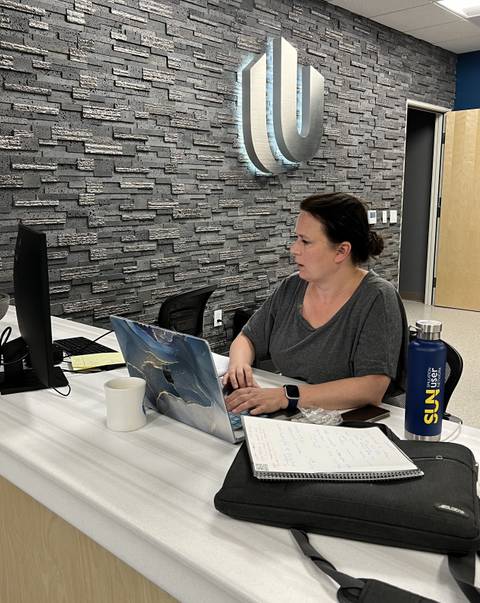
Time Management in Nursing School
Dr. Talitha Basinski, Assistant Director of Nursing
Nursing school is nothing like any other college course work you have done. To be successful in a nursing program, you will need to develop critical thinking and time management skills. For many students, this can be pretty challenging and, at times, discouraging. The good news is, once you have these concepts mastered, you will use them in your new career. Critical thinking can take some time to learn, but time management is actually pretty easy to conquer.
Write it all down
Whether you use an app, a Google Doc, or good ole fashioned paper calendar, writing everything down will allow you to see the big picture. Write down all your due dates for the entire semester. Now plug in any important events: holidays, your anniversary, your hamster’s birthday, etc. At this point, you may want to ugly cry, and that’s okay. Let it all out, wipe your snot, and get back to it.
How do you eat an elephant?
Honestly, I don’t know why you would want to, but if you did I would suggest doing so one bite at a time. The same method applies to nursing school. Papers, quizzes, and care plans can be overwhelming and seem impossible, but once you break it down to bite-sized pieces, it is way more manageable.
Take a look at any bigger assignments that are typically due toward the end of the semester. Ensure that you understand what is involved and estimate how much time it will take to complete it. When possible, try to get started on this project as soon as possible, even if it’s just writing an outline or reading up on the topic. Give yourself unofficial due dates throughout the semester to keep yourself on track.
Always plan to finish assignments a few days early. For example, if you have a project due on a Friday, put a pre-due date on Tuesday. This will give you a buffer in case life throws you a curveball, which life inevitably will do.
Weekly planning
Now that you have the big picture, you will want to look at your schedule by week. What assignments are due this week? Any tests? When are lectures and clinical? When do you work? Are there any important events? Put everything on a weekly calendar. Now look back at your master calendar to see if there’s anything that you should be working on that’s not due quite yet. Staying ahead is the best way to be successful.
Daily planning
Now that you know what’s due this week, it’s time to make a daily to-do list. List everything you need to get done, from homework to taking out the trash. Put it in chronological order if possible, followed by order of importance. You may want to use a different color for things that have to be done that day. Don’t make it an overwhelming and impossible to-do list. Plan for things to go sideways and give yourself grace when they do.
One way that I like to approach daily planning is by using sticky notes. This way if something new needs to be added, you can move the notes around in order of importance. If you don’t want to destroy the rainforest with all of that paper, there are sticky notes apps that can be installed on your computer or tablet.
Final thoughts
Make frequent office hour appointments with your professors. Most colleges require their faculty to be available for weekly office hours. This is because it is proven that students will be more successful when they are supported. Whether you love, hate, or love to hate your professor, they are there to guide you on your journey to nursing. I recommend that you come to your appointment prepared with specific questions to ensure you have a productive meeting.
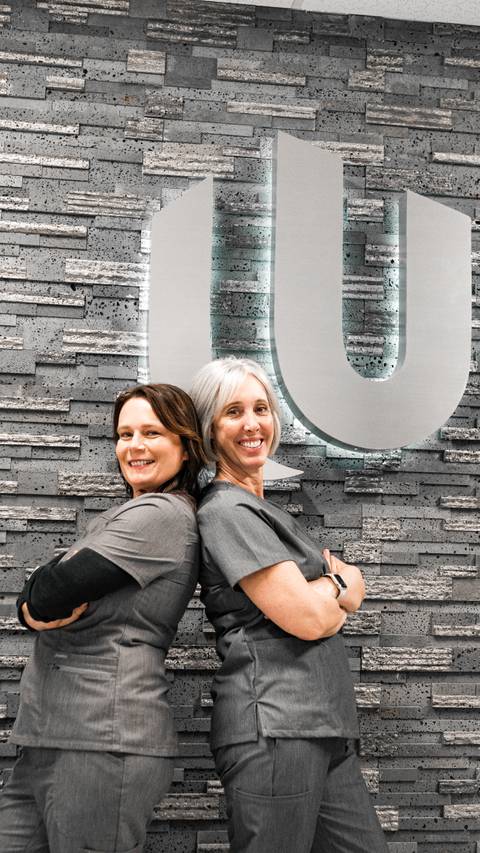
What's In a Name?
Dr. Talitha Basinski and Professor Jennifer Zirzow
In the world of healthcare, we often talk about patient-centered care. We focus on things like informed consent, education, involving family, ensuring the patient has physical and emotional comfort, and honoring the patient’s preferences. One often overlooked aspect of patient-centered care is correctly pronouncing a patient's name. While that may seem insignificant, especially if you have a common name, you would be surprised at the importance it holds.
Imagine how vulnerable our patients feel, already anxious about their condition, when they are in the healthcare environment and not always understanding what is going on around them. Then add to it having their name mispronounced repeatedly. Such experiences can add unnecessary stress to an already stressful situation. Correctly saying a patient's name can contribute to a more calming and reassuring environment.
A person's name is more than just a label; it's a fundamental part of their identity. For some, it may be a name that holds cultural or personal significance. For others, their legal name may be attached to negative experiences, and they may prefer to be called by a different name. Using a patient’s preferred name, and pronouncing it correctly, can foster trust. Alternatively, mispronouncing a patient's name, or using a name they don’t like, can make them feel like just another medical case, rather than a unique individual. Taking the time to learn and correctly say a patient's name is a simple but important way to acknowledge their identity and make sure they feel seen.
We live in a time during which we care for patients from a variety of cultural and linguistic backgrounds. Taking the time to correctly pronounce a name demonstrates cultural sensitivity and respect for diversity. This not only benefits the patient's experience, but it also helps healthcare providers bridge potential communication gaps and deliver more effective care. If you aren’t sure how to pronounce a name, ask the patient. Don’t be afraid to repeat saying it until you get it right.
Patient-centered care involves every aspect of a patient’s experience. Pronouncing a patient's name correctly might seem like a minor detail, but it can have a significant impact on how patients perceive the quality of care they receive. It reflects respect for their individuality and creates an environment of trust and open communication. There is nothing more patient-centered than making sure our patients feel seen, heard, and respected.
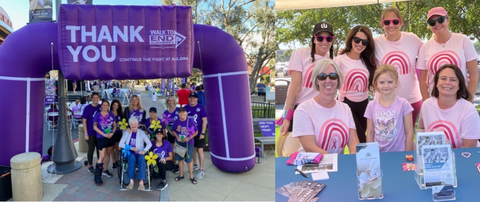
United We Walk: Supporting Alzheimer’s and Breast Cancer Awareness
Dr. Karen McDaniel, Director of Nursing
At United University of Nursing-United Nursing College (UUN-UNC), our commitment to making a difference goes beyond the classroom. In October, we were proud sponsors of the Alzheimer’s Association's Walk to Remember in Temecula and the Susan G. Komen Breast Cancer Walk in Murrieta. It is a testament to the passion and drive of our faculty, staff, and supporters who came together to make a significant impact on the fight against Alzheimer's and Breast Cancer.
Alzheimer’s Association's-A Walk to Remember
On October 7th, we proudly sponsored the Alzheimer's Walk in Temecula, California, where our dedicated team not only supported a vital cause but emerged as the top fundraising team. What made this event even more special for me was the opportunity I was provided to share my own story as someone who has witnessed the profound impact of Alzheimer's disease both personally and professionally. I have cared for many persons living with dementia in my career and have taught dementia care to students for the past 16 years. Approximately 12 years ago, my own mother began her battle against this relentless condition. I have had the privilege and heartache of supporting her through the various stages. This story is one of many shared among our staff and faculty here at UUN, as well as the family, friends, and caregivers of the estimated 13 million persons living with Alzheimer’s in the United States alone. In fact, there are over 55 million persons living with dementia worldwide with approximately 60-70% of all cases being attributed to Alzheimer’s (WHO, 2023).
The Alzheimer's Walk is more than just a fundraising event; it's a day filled with hope, unity, and resilience. There is a “Promise Garden” at the event where participants choose the color of flower that symbolizes how Alzheimer’s has impacted them.
Here is what each color flower symbolizes:
Blue: I have Alzheimer’s disease
Yellow: I am supporting or caring for someone with Alzheimer’s/dementia
Purple: I have lost someone to Alzheimer’s/dementia
Orange: I support the cause and the Alzheimer’s Association's vision of a world without Alzheimer’s
If you have never attended a “Walk to Remember”, it is an indescribable feeling to be part of the opening ceremony and the moment of silence as the sea of colorful windmill flowers makes a whispering sound in the wind. It is quite surreal.
Double the Impact - Susan G. Komen Breast Cancer Walk
Our commitment to supporting meaningful causes didn't end with the Alzheimer's Walk. On October 8th, UUN-UNC's passionate team was a sponsor for the Susan G. Komen Breast Cancer Walk. Participating in these back-to-back events demonstrated UUN-UNC’s unwavering dedication to raising awareness, supporting research, and, most importantly, standing in solidarity with those affected by these two life-altering diseases.
At UUN-UNC, we believe in the power of education, compassion, and community. Our participation as sponsors and as the top fundraising team at the Alzheimer's Walk was a powerful testament to these values. We will continue our efforts to create positive change in the world and support important causes like Alzheimer's and breast cancer research. Together, we can make a significant impact, foster hope, and, ultimately, improve the lives of those affected by these diseases.
World Health Organization. (2023). Dementia.
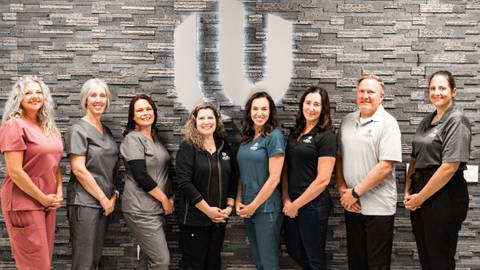
Charting the Course: Navigating the BRN Approval Process for a New Nursing Program
Dr. Julie Robinson, Dean Emeritus
I am thrilled to share the momentous journey of United Nursing College to the establishment of a new nursing program. As the college's first Dean of Nursing, I am honored to have been a part of a team of dedicated professionals who moved this initiative forward. I want to take this opportunity to shed light on the intricate process of gaining approval from the Board of Registered Nursing (BRN), which is a vital step in bringing this vision to life.
Embarking on the creation of a new nursing program is not only a significant milestone for our institution but also a crucial contribution to healthcare in our community. It represents our commitment to producing highly skilled and compassionate nurses who will make a lasting impact on patient care and healthcare. The BRN approval process ensures that a new program meets the high standards and rigorous requirements set by the California BRN, ensuring the quality of education and the competency of our future nursing graduates.
Key steps:
1. The feasibility study is a comprehensive report researched and written as part of the first phase of the BRN approval process. This study provides crucial information regarding demographics, resources, and program sustainability. BRN approval and acceptance of the feasibility study is required prior to moving on to program development.
2. The BRN requires the proposed program to also prepare a self-study to include information and components that demonstrates compliance with Title 16, Article 3 of the Business and Professions code for a registered nursing prelicensure program.
3. Program Development is the second phase of the approval process. It is extensive and involves program structure, curriculum design, faculty recruitment and qualifications, clinical affiliations, and resource availability and allocation. This phase lays the foundation for a comprehensive and rigorous nursing education program.
4. The curriculum must meet the required standards to prepare students for nursing practice. Nursing faculty members must meet the BRN's stringent qualifications and have the expertise to educate future nurses effectively.
5. Clinical affiliations and partnerships with healthcare facilities for clinical training must be established. These affiliations are essential for providing students with hands-on experience.
6. Resources and support must show the availability of sufficient resources, including labs, libraries, and administrative support to facilitate effective teaching and learning.
7. The BRN conducts an on-site visit to evaluate the program's facilities, faculty, and resources. This visit is a critical step in the approval process as it validates the work completed in the program development phase.
8. Once all is complete, the BRN meets to review the information brought forth since the feasibility study, to either accept or deny the self-study as required in the final steps of gaining approval to be a licensed nursing school in California.
9. Once approval is granted, the school may accept their first cohort of students.
Tips for Success:
1. Thorough planning and begin the planning process early to involve key stakeholders to ensure a well-structured program.
2. Pay attention to detail and pay meticulous attention to the BRN's guidelines and requirements to ensure a smooth approval process.
3. Maintain transparency and maintain open communication with the BRN throughout the process to address any questions or concerns promptly.
4. Invest in faculty development to ensure they meet the BRN's stringent qualifications.
5. Be willing to make continuous improvement and commit to ongoing program assessment and improvement to maintain BRN approval and provide the best education to future nurses.
Our journey to establish a new nursing program is undoubtedly challenging, but it is also incredibly rewarding. Through dedication, collaboration, and unwavering commitment to excellence, we will overcome any hurdles in our path and provide an outstanding education to future nurses.
With determination and a shared vision, we will pave the way for a brighter future in nursing education.
